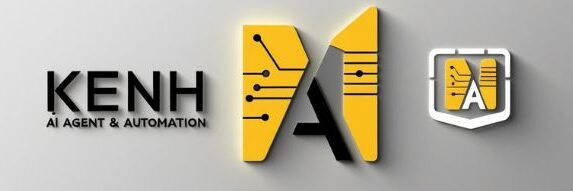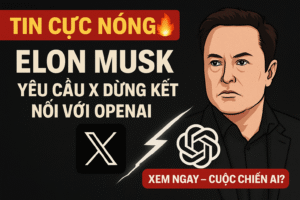What’s Next? The Future of AI Workflow in 2026 and Beyond
Artificial Intelligence is evolving at an unprecedented pace. As we approach 2026, AI is no longer a tool—it’s becoming the core driver of business workflows. With AI Agents, automated workflows, and the MCP framework (Multi-agent Collaborative Process), organizations are moving toward a new era of productivity, agility, and intelligence.
In this article, we’ll explore how AI workflows will shape the business landscape, which technologies are leading the way, and how you can start preparing today.
The Rise of AI Agents – Your Digital Co-Workers of the Future
What are AI Agents and why do they matter?
AI Agents are intelligent software entities designed to carry out specific tasks autonomously. Unlike basic bots, these agents learn, adapt, make decisions, and even collaborate with other agents or humans.
By 2026, AI Agents will evolve into core operators across enterprise systems, capable of:
-
Making real-time decisions
-
Collaborating across platforms and departments
-
Reducing operational load by handling repetitive and analytical tasks
How AI Agents are changing human roles
Rather than replacing humans, AI Agents are redefining roles:
-
Employees become trainers or supervisors of agents
-
Focus shifts to creativity, empathy, and strategic thinking
-
Less time spent on mundane tasks; more value from human insight
Automated Workflows – The Future of Digital Productivity
From Traditional BPM to Intelligent AI Workflow
Business Process Management (BPM) used to rely heavily on static logic and manual oversight. In contrast, AI-powered workflows are dynamic, data-driven, and context-aware.
Key benefits of AI workflow systems:
-
Smart Automation – Adaptive logic based on real-time inputs
-
End-to-End Optimization – Seamlessly identifies and removes bottlenecks
-
Personalization at Scale – Custom processes for roles, teams, or users
Real-World Applications in 2025
-
Banking: AI agents process loan applications in minutes instead of days
-
Ecommerce: Automated marketing workflows adjust emails based on user behavior
-
Logistics: AI dynamically reroutes shipments based on weather and demand
MCP Framework – The Backbone of Collaborative AI
What is MCP?
MCP (Multi-agent Collaborative Process) is an architecture that organizes AI workflows around collaboration between agents. It’s a foundational framework for scalable and intelligent automation.
Why MCP matters:
-
Modular system that scales across departments
-
Agents communicate seamlessly and securely
-
Optimized for collective goal achievement (KPIs, cost, speed)
How MCP Will Shape Enterprise AI
-
In large enterprises: Coordinates dozens of agents across operations
-
In startups: Offers flexible, low-code automation with minimal overhead
-
In product teams: Empowers rapid prototyping with self-improving flows
3 Game-Changing AI Tools Driving the Future of Workflow
Claude AI – Safety-First Conversational Intelligence
Developed by Anthropic, Claude AI is designed with ethical and safety-first principles, making it ideal for enterprise use.
Features:
-
Handles long-form context and documents
-
Provides fact-based summaries and insights
-
Excellent at maintaining transparency in decision-making
GPT-4.5 – Language Power Meets Workflow Logic
OpenAI’s GPT-4.5 isn’t just a text model—it’s becoming a cognitive engine:
-
Can execute tasks via integrated agent frameworks
-
Compatible with tools like LangChain and AutoGen
-
Builds MCP-compliant workflows directly from natural language prompts
AutoGPT – Autonomous, Goal-Oriented AI
AutoGPT is the “fire-and-forget” solution of the AI world. Give it a goal, and it breaks it down into tasks, executes, and evaluates results—no human micromanagement needed.
Perfect for:
-
Startups wanting lean automation
-
Content creators scaling output
-
Project managers needing task-level intelligence
What’s Next? AI Workflow Trends That Will Shape 2026
1. Self-Improving Workflows
AI will evolve from “executors” to “learners.” Workflows will improve automatically with each iteration, detecting inefficiencies and fixing themselves.
2. Visual Command Centers
Workflows will move from backend code to front-end dashboards, allowing teams to visualize, adjust, and control agent flows in real time.
3. Cross-Departmental Collaboration
No more silos. AI agents will handle marketing, HR, IT, and sales through integrated processes that share context and priorities.
Why You Should Prepare Your Business for AI Workflow Now
-
Competitive edge: Those who adopt early will reduce costs, speed up delivery, and improve customer experience
-
Change is accelerating: The longer you wait, the harder and costlier the transition
-
AI talent is scarce: Early investment gives you access to top-tier AI talent and tools
Take Action Now – Discover Smart AI Workflow Tools
Are you ready to automate and enhance your organization’s workflows with AI?
🔍 Don’t wait for your competitors to outpace you!
👉 Explore smart AI agent tools now at:
https://magiclight.ai/official-website?code=l9nbbe87y
Conclusion
2026 marks the rise of intelligent, collaborative, and adaptive AI workflows. With AI Agents at the core, the MCP framework as the engine, and cutting-edge tools like GPT-4.5, Claude AI, and AutoGPT as your digital arsenal, the future of work is being rewritten in real-time.
This transformation is not a “nice to have”—it’s a necessity for survival and growth in the digital economy.
Take action today. Build your AI-powered future now.


